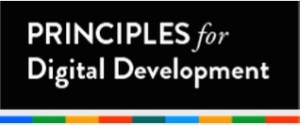The Apple Watch, the Fitbit, Google Glass and many other wearable tech are luxuries for tech-savvy consumers. But could wearable tech be used for diagnosing deadly diseases, monitoring pregnant mothers’ health, tracking air quality, alerting people with “push notifications” or warning of an earthquake’s early vibrations?
UNICEF, in partnership with the microprocessor company ARM and the design firm Frog, is hosting the Wearables for Good Challenge. Blair Palmer, innovation lab lead at UNICEF, says in this summary story from DevEx that UNICEF’s interest in convening the challenge is to “ask these questions and provoke the industry and people to think differently on a global level and not just have these things come out of Silicon Valley. The wearables challenge seeks applications that can provide low-power, unintrusive, highly durable solutions in low-income settings, and many sensor technologies fit that bill. Close to 1 billion more people are expected to come online by 2017, and UNICEF is taking note, Palmer said.
The challenge is now closed to applications. The challenge has garnered 250 submissions from 46 countries across 6 continents, with nearly 2000 registrations from 65 countries. 10 finalists have been selected. Each finalist will then be assigned to work with 1-2 coaches during 2 calendar weeks (10-28 September). Coaches will provide feedback to finalists in order to help hone their ideas for final submission. The challenge partners will award $15,000 to two winning proposals for wearable and sensor products with social impact potential. The winners will be announced by November 2015.
A summary of the finalists:
Communic-AID: A wearable device that facilitates record keeping, aids in the tracking of medications that have been distributed in a post-disaster context and allows the patient to take part in their treatment.
Droplet: a wearable water purification device in the form of a bracelet, to make safe drinking water available to everyone
GuardBand: a system that helps protect children from abuse and observes their health.
Khushi Baby: a wearable platform to bridge the world’s immunization gap is a system for tracking vaccination and mobilization in the last mile.
Raksh: named after the Sanskrit word “safeguard,” this is a low cost (25$) bluetooth-based, ear-worn multi-parameter monitoring platform.
SoaPen: a wearable and portable soap re-designed to encourage hand washing amongst young children to reduce the risk of catching and spreading disease thereby increasing their lifespan.
teleScrypts: seeks to solve the challenge of providing health care workers with advanced healthcare technology in low resource communities at a low cost.
TermoTell: a real time temperature monitor and alert system, designed to save the lives of children under five at risk of Malaria.
Totem Open Health: an open platform and ecosystem for wearable health technology, including: sensors, data collection, storage, sharing, analysis and algorithmic interpretation.
WAAA!: Wearable, Anytime, Anywhere, Apgar is a mobile phone, text-based surveillance service that systematically transmits live APGAR data via soft patch sensors located on a newborn baby.
Follow #WEARABLESFORGOOD and @UNICEFinnovate on Twitter for updates about this and other similar campaigns.


